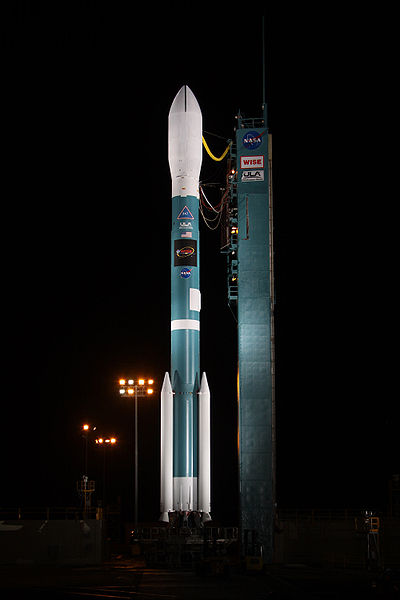
NASA’s Wide-field Infrared Survey Explorer (WISE) has found new members of asteroid families. This was accomplished by reviewing millions of images collected during the asteroid-hunting part of the WISE all-sky survey, which has been dubbed NEOWISE.
The main asteroid belt is the primary location from which what are known as near-Earth objects, or “NEOs,” come from. NEOs are asteroids and comets that come uncomfortably close to Earth (some 28 million miles or less).
During the NEOWISE phase of study, WISE discovered some 28 new families of asteroids. This effort also helped to categorize thousands of these tiny worlds for the very first time. Through this endeavor, scientists are gaining a better understanding of how asteroids were formed.

“NEOWISE has given us the data for a much more detailed look at the evolution of asteroids throughout the solar system,” said Lindley Johnson, the program executive for the Near-Earth Object Observation Program. “This will help us trace the NEOs back to their sources and understand how some of them have migrated to orbits hazardous to the Earth.”
All total, researchers looked at approximately 120,000 of the roughly 600,000 known asteroids in the main belt that straddles the Mars-Jupiter divide where many of these remnants of the solar system’s formation reside.
Thirty-eight thousand of the asteroids observed, about one-third of the total number of those reviewed, were added into 76 families—28 of which were new. Some of the asteroids already known to science were reclassified after the completion of the NEOWISE study.
Asteroid “families” are formed when a collision breaks a “parent” body into smaller segments. These “related” body fragments tend to travel around the Sun in groups. Over time, the distances between the individual members of these families becomes greater.
To help better understand the lineage of the individual family members, NEOWISE looked at the amount of light that these segments reflect. As asteroids are made of the same minerals that comprised their parent, their reflectivity is similar. Some are dark in color, while others are very bright. In visible light, one asteroid looks very much like another. NEOWISE countered this because of its ability to view these tiny worlds in infrared light. Through this process the object is visible through its heat. The bigger the object, the more heat it gives off.
After the size of an asteroid is determined, its reflective properties can be deduced. In so doing, scientists can delineate which asteroids belong to which family.
“We’re separating zebras from the gazelles,” said Joseph Masiero, the lead author of the study which appeared in Astrophysical Journal. “Before, family members were harder to tell apart because they were traveling in nearby packs. But now we have a better idea of which asteroid belongs to which family.”
Researchers now plan to look into the original parent bodies from which these families descended from.
“It’s as if you have shards from a broken vase, and you want to put it back together to find out what happened,” said NEOWISE Principal Investigator Amy Mainzer. “Why did the asteroid belt form in the first place and fail to become a planet? We are piecing together our asteroids’ history.”
WISE was launched in 2009 atop a United Launch Alliance Delta II rocket from Vandenberg Air Force Base in California. WISE completed its primary mission in 2011 after it scanned the entire sky twice.
Want to keep up-to-date with all things space? Be sure to “Like” AmericaSpace on Facebook and follow us on Twitter: @AmericaSpace




An outstanding share! I’ve just forwarded this onto a colleague who was conducting a little homework on this. And he actually bought me lunch because I discovered it for him… lol. So let me reword this…. Thanks for the meal!! But yeah, thanks for spending time to talk about this subject here on your web page.
I am genuinely delighted to glance at this web site posts
which includes tons of valuable information, thanks for providing such statistics.
Will Smith has gotten out of some tight scrapes – killer robots, giant mechanical spider, and like five alien invasions – but we don’t know HOW he’s going to get out of this one!
Isabel Marant High-Top Sneakers Bekett Suede Red Navy http://isabelmarantshoesol.com/isabel-marant-hightop-sneakers-bekett-suede-red-navy-p-31414.html